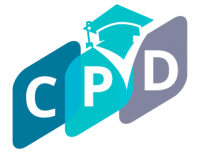Introduction:
The world of children’s literature is vast and varied, offering a treasure trove of stories catering to every age group. Selecting the right storybooks for different stages of a child’s development is crucial, as it not only enhances their reading experience but also contributes significantly to their cognitive, emotional, and social growth.
Infants and Toddlers (0-3 years):
For the youngest readers, colorful board books with large, simple images and minimal text are ideal. These books stimulate visual development and help in introducing basic concepts like colors, shapes, and animals. Interactive elements such as textures and flaps engage their senses, fostering a love for books from an early age.
Preschoolers (3-5 years):
Preschoolers are curious explorers, and their books should reflect that. Opt for picture books with relatable characters and simple narratives. Stories that explore everyday experiences, emotions, and basic moral lessons resonate well with this age group. Additionally, books with rhyming patterns and repetitive elements support language development and phonemic awareness.
Early Readers (6-8 years):
As children transition into early readers, chapter books with larger fonts and more complex storylines become suitable. Look for books that align with their emerging reading skills, featuring engaging plots and a mix of dialogue and narration. This stage is ideal for introducing series books, allowing children to follow characters through multiple adventures.
Middle Grade (9-12 years):
Middle-grade readers are ready for more intricate plots and diverse genres. Books in this category often tackle themes of friendship, identity, and self-discovery. Fantasy, mystery, and adventure genres become popular choices, providing an opportunity for children to expand their literary preferences and explore worlds beyond their own.
Young Adults (13+ years):
As readers enter their teenage years, the selection broadens to encompass young adult literature. Themes become more complex, addressing issues related to identity, relationships, and societal challenges. Genres such as dystopian fiction, coming-of-age stories, and contemporary realism offer a diverse array of options for this age group.
Conclusion:
In the vast landscape of children’s literature, choosing the right storybooks for different age groups is akin to providing tailored keys to unlock the doors of imagination and learning. By selecting age-appropriate books, we not only cater to the evolving tastes and comprehension levels of young readers but also foster a lifelong love for the written word. As we guide children through the literary realms that match their developmental stages, we open doors to a world where stories become lifelong companions and mentors.
